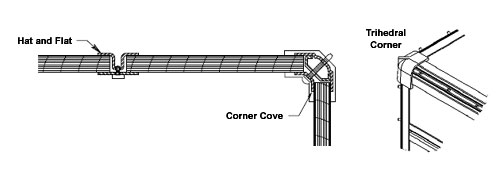|
|
|
|
|
Used Modular Shielded Rooms
Modular shielded rooms are the most popular shielded enclosure. The modular design allows for easy assembly and disassembly at a later date. (However, this ease of construction should not be confused with "portability.") Modular rooms can also be expanded or downsized depending on your future requirements.
|
Currently Available
|
Manufacturer
|
Size
(approx)
|
Location
|
Notes
|
None at this time, but check back soon!
Note
Used rooms can offer a terrific savings over the price of a new room - typically 50% or more. However, be aware of the following cautions:
- DJM Electronics does not offer performance guarantees for any room. Most rooms can be made to achieve 80dB of shielding effectiveness, but this is not always the case. Some rooms listed here may require considerable additional expense to repair or renovate before they will perform at an acceptable level. If you must have a performance guarantee, then you should consider a new room.
- Payment terms are 50% with the purchase order and 50% upon delivery of the room. No exceptions.
- Installing a shielded room is not as easy as it might appear. We recommend enlisting the services of a shielding installer.
Typical Construction
Panels and Framing
Modular Shielded Rooms are usually comprised of pre-fabricated panels and framing elements. The floor, wall and ceiling panels typically consist of two layers of 26 or 28 gauge galvanized sheet metal laminated to both sides of a 3/4" particle board core. The panels are then connected with extruded steel framing elements that clamp on the panel edges and lock the panels together. Framing elements are zinc plated like the panels to resist corrosion.
The framing elements consist of 3 pairs of components typically named "hats and flats" (in reference to the shape of their cross section), "coves" for the elements that make the 90 degree connections between the walls and the ceiling and floor, and the trihedral corners. The pairs of framing elements are positioned inside and outside the room and joined together using cadmium plated fasteners spaced 4" apart. These fasteners provide a uniform pressure along the framing elements thereby insuring a consistent RF seal with the panels.

To maintain electrical isolation from the parent structure, the shielded room is constructed on top of a 6-mil dielectric vapor barrier and two 1/8" dielectric hard-board underlayments. In addition, all penetrations into and out of the room must be made using specially designed accessories described below.
Shielded Door
Access into the shielded room is provided by a shielded door. The door provides an RF-tight seal by bringing a brass knife edge (sometimes two knife edges) on the door into contact with beryllium-copper fingerstock in the door frame. When the door leaf is nearly closed, a cam actuated latch draws the knife edge of the door into the fingerstock, completing the seal. The door is attached to the shielded room by two or three self-adjusting, thrust and radial bearing hinges. These hinges also allow the door to be adjusted within the door frame in both the vertical and horizontal directions in order to insure a tight electrical seal between the knife edge and the fingerstock.
Shielded door sizes are normally 3' x 7' and 4' x 7'.
Power and Signal Line Filters
With the exception of RF cables, all conductors penetrating the shielded room must be filtered. Used RF Shielded Rooms normally come with at least one power filter that provides for one 30 amp circuit. We can usually provide additional filters for most power and signal line requirements. For the latest digital signals (like Ethernet or USB 2.0) that cannot be electrically filtered without destroying the signal integrity, we can provide specially designed optical isolation filters.
Waveguides
Waveguides are used to allow water, gas or air to penetrate the shielded enclosure without compromising the shielding effectiveness. The diameter of the waveguide determines the cutoff frequency while the length of the waveguide affects the shielding effectiveness. Waveguides come in a variety of shapes and sizes depending on the application. For air vents, we use a honeycomb waveguide construction which looks like a see-through metal screen and can interface with HVAC ducts. Feedthrough waveguides resemble pipes and come in sizes ranging from ¼" to 4" diameters. They are commonly used to allow fiber optic cables into the shielded room and for fire suppression sprinklers. In all cases, a dielectric must be included in the construction of the waveguide in order to maintain electrical isolation between the shielded enclosure and the outside environment.
Sizes
Used RF Shielded Rooms come in many different sizes and layouts depending on the requirement of the original owner. Most designs can easily be modified into larger or smaller rooms. Although modular panels come in a standard sizes of 4' x 8' and 4' x 10', it is common to cut the panels to sizes that suit our customer's needs. Please be sure to provide a minimum and maximum allowable room size when you contact us.
|
|
|
|